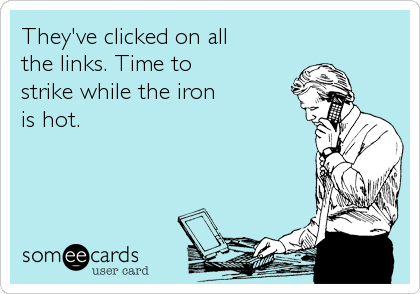
Email marketing is an effective way to reach your customers, but if you aren’t segmenting your database, you might be losing more readers than gaining conversions. The best way to use email marketing to your advantage is by targeting the content to specific groups of customers.
Segmenting your email database will improve click and conversion rates. HubSpot reported that segmenting email campaigns led to as much as a 760% increase in revenue, but fewer than 30% of marketers are segmenting their audiences by campaigns.
Segmenting an email database can be done in a variety of ways that make the most sense to your business or even a specific campaign. From complex to simple, here are some optimum ways to segment your database.
Segment According To Demographics and Buyer Personas
The easiest way to think about your customers is to look at the various demographics to which they belong. You can target an email based on age, gender, geographic location, job title or relationship to your company. For example, if you have a new product aimed at business decision makers in a certain region, you can segment based on these criteria. When people see themselves reflected in a campaign, they are likely to respond more positively.
In addition to demographics, understanding your customers’ interests and buyer personas will result in more engagement over time. The MailChimp study showed emails targeted to distinct interest groups had 73.48% higher click rates than non-segmented campaigns. Interest groups help automatically segment your customers when they indicate their interests upon subscribing. The more options you provide in the sign-up process leads to better indication of who your customers are, specifically helping you target campaigns.
Even without aggregated interest information, you can also use industry insight to determine the buyer personas important to your business. This guide can get you started in creating buyer personas with the questions and touchstones essential to this practice. Once your buyer personas have been established, use them perceptively to segment your database.
Segment based on Registration Dates and Sales Cycle Points
Sometimes it makes sense to target customers based on when they registered for your emails. The way you speak to new customers is often different than how you aim content at loyal ones. Try segmenting your database into customers who have signed up in the last 30 days, the last year and beyond. Reaching these groups at different points in their experience with your company will show you’re paying attention to who they are and what they are looking for.
Another way to demonstrate this attention to customer detail is to segment based on where a customer is in the sales cycle. Customers always on the verge of a sale will receive content differently than those who consider their options longer.
For example, if a company is proactive in searching for solutions, they will keep a steady status of just researching and gathering information. On the other hand, some companies may encounter problems, and your solution, presented at the right time, can save the day, bringing them closer to a sale.
Segment Based on Digital Behavior and Email Activity
 To effectively segment your database, it is important to know how a customer interacts both with your website and your emails. Tracking their digital behavior will provide you the insight of how to segment then target each group. If a customer gave their email for more information and education, you can start slow with these customers.
To effectively segment your database, it is important to know how a customer interacts both with your website and your emails. Tracking their digital behavior will provide you the insight of how to segment then target each group. If a customer gave their email for more information and education, you can start slow with these customers.
If they gave their email with the intent of making a purchase or even after a purchase has been made, you can jump into more sales-like emails more quickly, knowing you have a captivated audience. Tailoring an email segment by the amount of time spent on your site or the ways in which customers use the site will only improve engagement.
After using the above methods to your advantage, you can begin segmenting your segments. Using the findings gained from past campaigns about user activity within the email can help eliminate bounce backs and unsubscribes. Tracking the clicks, opens and unique opens of an email allows you to focus on customers showing real interest in what your emails have to say.
These are just a few of the strategies you can implement when segmenting your email database. Your segments can be as broad or specific as you wish, making the possible number of segments endless. Once you start using these, I have no doubt you will see an increase in email engagement. The goal of segmenting is to create content customized to customer groups. This will lead to more informed content creation and focused marketing. Calculated segmenting can only improve your inbound marketing plan.
How do you segment your email database? Let us know.

by The Penguin Team on November 05, 2015
As a leading B2B digital marketing agency, We help B2B Technology Companies, enterprise software, and hardware companies increase brand awareness, reach more qualified leads and close more customers. Penguin Strategies is a Diamond Partner of HubSpot.






